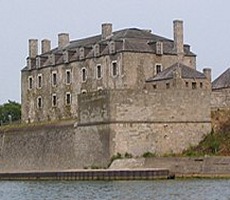Relive the historic Siege of 1759 when British forces captured Fort Niagara from the French. This is Old Fort Niagara’s largest and most colorful event of the year. Witness large-scale battle reenactments, stroll through period camps, admire the work of skilled artisans, shop for period merchandise and thrill to the sounds of fifes and drums. It is one of the largest French and Indian War events in the world.
Date of Reenactment: July 1 – 3, 2023
Location: Old Fort Niagara, Youngstown, NY
Event Schedule:
Saturday, July 1 –
10:00 a.m. Trooping of the Colors – Witness this centuries old military ceremony in which regimental colors are paraded in front of the troops.
11:00 a.m. British Engineers Reconnoiter the Fort – Attacking an 18th century fort was a complicated business. Trained engineers determine the best way to attack Fort Niagara. The French fire back.
11:30 a.m. Artillery Firing Demonstration
1:00 p.m. Military Music
2:00 p.m. Battle Reenactment
3:00 p.m. Military Nursing in the French and Indian War
4:00 p.m. Artillery Firing Demonstration – Soldiers fire the powerful cannons of the Dauphin Battery.
Sunday July 2 –
10:00 a.m. British Native Council- Discover how diplomacy played a major role in the campaign to capture Fort Niagara
11:00 a.m. Siege Tour – Discover the “nuts and bolts” of an 18th century siege on this guided tour.
1:00 p.m. Military Music- Learn about the role music played in the 18th century military. Enjoy duty calls and musical entertainment
1:30 Rutherford’s Embassy- Captain Walter Rutherford delivers a surrender demand to Captain Pierre Pouchot.
2:00 p.m. Battle Reenactment
3:00 p.m. Nursing Demonstration
4:00 p.m. Artillery Firing Demonstration
Monday, July 3 –
10:00 a.m. French Native Council
11:30 The Battle of La Belle Famille- Watch the recreation of this decisive battle that decided the fate of Fort Niagara
1:00 p.m. Military Music
2:00 p.m. Artillery Demonstration
3:00 p.m. Battle Reenactment
3:30 p.m. Surrender Ceremony
Battle of Fort Niagara Information
The Siege of Fort Niagara was a significant event that took place during the American Revolutionary War. It occurred between July 1 and July 26, 1779, at Fort Niagara, located at the mouth of the Niagara River in present-day Youngstown, New York. The siege was a joint military operation led by American forces, primarily from the Continental Army, and supported by the newly formed United States Navy, against the British-held fortification.
At the time of the siege, Fort Niagara was a crucial stronghold for the British in the Great Lakes region. It served as a vital supply depot and a key link in their communication and transportation network. Capturing the fort would not only provide strategic advantages for the Americans but also disrupt British operations in the region.
The American forces, under the command of General John Sullivan, comprised approximately 3,500 soldiers. They were aided by a small fleet of warships, including the schooners USS Enterprise and USS Revenge. On the other hand, the British garrison at Fort Niagara, led by Captain John P. Montresor, consisted of around 600 troops, primarily made up of the 8th (King’s) Regiment and the Butler’s Rangers loyalist unit.
The siege began with a bombardment of the fort by American artillery and naval gunfire. The American forces established a perimeter around the fort, cutting off its land-based supply routes and isolating the garrison. The naval vessels played a crucial role in blockading the fort and preventing any reinforcements or supplies from reaching the British.
The American troops launched several assaults and skirmishes against the fort’s defenses, attempting to breach the walls and overrun the garrison. However, the British defenders held their ground and repelled the American attacks. The fort’s solid construction, along with the use of cannons and musket fire, allowed the British to maintain a strong defense.
During the siege, both sides engaged in artillery duels, with cannon fire exchanged between the fort and the American batteries. The British also attempted to send for reinforcements, but the American navy intercepted and captured the British vessels, preventing any additional troops from reaching Fort Niagara.
As the siege progressed, the British garrison faced dwindling supplies and mounting casualties. The Americans continued their relentless bombardment and assaults, gradually wearing down the defenders. Recognizing the dire situation, Captain Montresor and the British command ultimately made the decision to evacuate the fort under the cover of darkness on July 26, 1779.
The successful American siege of Fort Niagara was a significant achievement for the Continental Army and the United States Navy. It demonstrated the growing strength and capability of the American military during the Revolutionary War. The capture of the fort boosted American morale and dealt a blow to British control in the region.
Following the siege, the Americans occupied Fort Niagara and utilized it as a base for operations against other British-held positions in the area. The fort remained in American hands until the end of the war, contributing to the ultimate success of the American Revolution.
Today, Fort Niagara is a historic site and museum, offering visitors the opportunity to explore the well-preserved fortifications and learn about the events that transpired during the Siege of Fort Niagara and its significance in American history.
Siege of Fort Niagara website.
